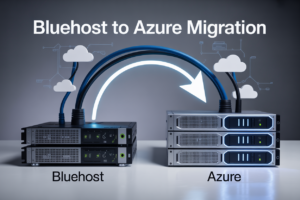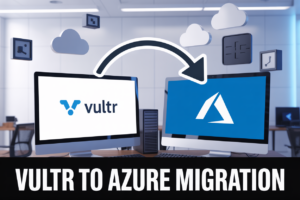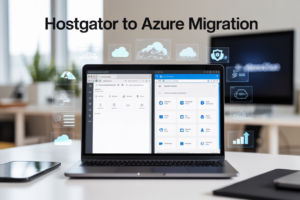Building effective data architecture for AI systems requires more than just throwing data at large language models and hoping for the best. Retrieval augmented generation has changed how we think about AI applications, demanding robust infrastructure that can handle both traditional data processing and specialized vector operations at scale.
This guide is designed for data engineers, solution architects, and AI practitioners who need to build production-ready generative AI infrastructure. Whether you’re migrating existing systems or starting from scratch, you’ll learn practical approaches that work in real-world environments.
We’ll explore how retrieval-augmented generation architecture transforms raw data into actionable AI insights, covering the essential components that make up modern AI data pipelines. You’ll discover cloud-native AI design patterns that provide scalability and reliability, plus learn how to implement vector database storage solutions that actually perform when your users need them most. Finally, we’ll dive into the security and compliance considerations that can make or break your AI data architecture in enterprise environments.
Understanding Retrieval-Augmented Generation Architecture
Core Components of RAG Systems
RAG architecture for AI combines three essential elements that work together seamlessly. The retrieval component searches through external knowledge bases using vector similarity matching to find relevant information. The generation component leverages large language models to produce contextually accurate responses. The augmentation layer bridges these systems, ensuring retrieved data enhances the LLM’s output quality while maintaining coherence and relevance across the entire AI data pipeline.
Benefits of Combining External Knowledge with LLMs
Integrating external knowledge sources with generative AI infrastructure dramatically improves response accuracy and reduces hallucinations. This approach enables AI systems to access real-time information beyond their training data cutoff, making responses more current and factual. RAG architecture also allows organizations to leverage proprietary data without retraining expensive models, creating cost-effective solutions that maintain competitive advantages while ensuring domain-specific expertise remains accessible to users.
Key Performance Metrics for RAG Implementation
Measuring RAG system effectiveness requires tracking specific metrics that reflect both retrieval quality and generation performance. Retrieval precision measures how accurately the system identifies relevant documents, while retrieval recall evaluates coverage of available knowledge. Response relevance scores assess whether generated answers appropriately address user queries. Latency metrics track end-to-end response times, and coherence scores measure how well retrieved information integrates with generated content for optimal user experience.
Essential Data Pipeline Components for AI Applications
Vector Database Selection and Optimization
Choosing the right vector database forms the backbone of any successful RAG architecture. Modern AI data pipelines demand databases that can handle millions of high-dimensional embeddings while maintaining sub-second query response times. Popular options like Pinecone, Weaviate, and Chroma each offer unique advantages – Pinecone excels in managed cloud deployment, while Weaviate provides exceptional semantic search capabilities. The key lies in evaluating your specific use case: query volume, embedding dimensions, and budget constraints. Optimization strategies include proper indexing algorithms (HNSW vs. IVF), memory allocation tuning, and implementing effective caching mechanisms to reduce latency.
Document Processing and Chunking Strategies
Smart document processing transforms raw text into searchable, contextually meaningful segments that generative AI can effectively retrieve and use. Chunking strategies directly impact retrieval accuracy – too small chunks lose context, while oversized chunks dilute relevance. Semantic chunking based on sentence boundaries and topic coherence often outperforms fixed-size approaches. Advanced techniques include overlapping chunks to maintain context continuity, metadata enrichment for filtering, and multi-modal processing for documents containing images or tables. The preprocessing pipeline should handle various formats (PDF, DOCX, HTML) while preserving document structure and relationships between sections.
Embedding Generation and Storage Solutions
Efficient embedding generation requires balancing model performance with computational costs across your data architecture for AI applications. OpenAI’s text-embedding-ada-002 offers excellent general-purpose performance, while domain-specific models like BioBERT excel in specialized fields. Batch processing reduces API costs compared to real-time generation, and caching mechanisms prevent redundant embedding calculations. Storage optimization involves vector compression techniques, dimensionality reduction through PCA when appropriate, and implementing tiered storage where frequently accessed embeddings reside in faster memory. Consider hybrid approaches combining multiple embedding models for different content types within your AI data pipeline.
Real-time Data Ingestion Mechanisms
Building robust real-time data ingestion systems ensures your RAG architecture stays current with evolving information landscapes. Apache Kafka serves as the messaging backbone for high-throughput streaming, while change data capture (CDC) systems monitor database modifications. Implement queue-based processing with dead letter queues for error handling, and use microservices architecture for scalable processing components. Stream processing frameworks like Apache Flink enable real-time transformations and filtering before vector storage. Consider implementing circuit breakers and rate limiting to protect downstream systems during traffic spikes, ensuring your generative AI infrastructure maintains consistent performance under varying loads.
Cloud-Native Infrastructure Design Patterns
Microservices Architecture for Scalable AI Workloads
Cloud-native AI design patterns rely on microservices to break down complex generative AI infrastructure into manageable, independent components. Each service handles specific functions like data ingestion, vector embedding, or model inference, enabling teams to scale individual components based on demand. This approach allows different teams to work on separate services using their preferred technologies while maintaining system-wide coherence. RAG architecture particularly benefits from this pattern, as retrieval services can scale independently from generation services, optimizing resource allocation across the entire AI data pipeline.
Containerization Strategies for ML Model Deployment
Containers revolutionize how AI models move from development to production environments. Docker containers encapsulate models with their dependencies, creating portable units that run consistently across different cloud environments. Kubernetes orchestrates these containers, managing deployment, scaling, and health monitoring automatically. For vector database storage and retrieval systems, containers ensure consistent performance whether running on local machines or distributed cloud infrastructure. This strategy eliminates the “it works on my machine” problem while enabling rapid deployment cycles essential for iterative AI development.
Auto-scaling Patterns for Variable AI Demand
AI workloads experience unpredictable traffic spikes, making auto-scaling crucial for cost-effective operations. Horizontal pod autoscaling adjusts the number of running instances based on CPU, memory, or custom metrics like query response time. Vertical scaling modifies resource allocation for individual containers when workloads require more processing power. Queue-based scaling patterns handle batch processing jobs efficiently, spinning up additional workers when job queues grow. Smart scaling policies consider both immediate demand and predictive patterns, ensuring your retrieval augmented generation system maintains performance during peak usage without over-provisioning resources.
Multi-cloud Deployment Considerations
Multi-cloud strategies protect against vendor lock-in while leveraging best-of-breed services from different providers. AWS might excel in machine learning services, while Google Cloud offers superior data analytics tools, and Azure provides seamless enterprise integration. Container orchestration platforms like Kubernetes facilitate workload portability across clouds. Data residency requirements often dictate deployment locations, especially for compliance-sensitive applications. Network latency becomes critical when components span multiple cloud providers, requiring careful architecture planning. Load balancing and failover mechanisms ensure high availability even when entire cloud regions experience outages, maintaining continuous service for your AI applications.
Implementing Efficient Vector Storage Solutions
Choosing the Right Vector Database Technology
Selecting the optimal vector database for your RAG architecture depends on specific performance requirements, data volume, and integration needs. Specialized vector databases like Pinecone, Weaviate, and Qdrant offer purpose-built indexing and similarity search capabilities, while traditional databases with vector extensions such as PostgreSQL with pgvector provide familiar SQL interfaces for existing teams. Cloud-native options like Amazon OpenSearch Service and Azure Cognitive Search integrate seamlessly with existing cloud infrastructure, offering managed scaling and maintenance. Open-source solutions like Milvus and Chroma deliver cost-effective alternatives with full control over deployment and customization, making them ideal for organizations requiring specific compliance or performance optimizations.
Indexing Strategies for Fast Similarity Search
Effective vector indexing strategies dramatically impact retrieval performance in generative AI applications. Hierarchical Navigable Small World (HNSW) graphs excel at high-dimensional similarity searches, providing sub-linear query times while maintaining accuracy for most RAG use cases. Product Quantization (PQ) reduces memory footprint by compressing vectors into compact codes, enabling larger datasets to fit in memory without sacrificing search speed. Inverted File (IVF) indexes partition the vector space into clusters, allowing parallel searches across distributed systems. Locality-Sensitive Hashing (LSH) offers probabilistic similarity matching with constant-time lookups, perfect for approximate searches where speed trumps precision. Combining multiple indexing approaches creates hybrid strategies that balance memory usage, search accuracy, and query latency based on application requirements.
Data Partitioning and Sharding Techniques
Strategic data partitioning optimizes vector database storage and query performance across distributed cloud infrastructure. Semantic partitioning groups related vectors by content type, domain, or temporal characteristics, enabling targeted searches that reduce computational overhead while improving retrieval relevance. Geographical sharding distributes data across regions, minimizing latency for global applications while ensuring compliance with data residency requirements. Hash-based partitioning ensures even distribution across shards, preventing hotspots that could bottleneck performance during peak query loads. Range-based partitioning organizes vectors by metadata attributes like creation date or document type, facilitating efficient filtering operations. Dynamic partitioning automatically redistributes data as collections grow, maintaining optimal performance without manual intervention while supporting elastic scaling patterns essential for cloud-native AI architectures.
Optimizing Retrieval Performance and Accuracy
Query Processing and Semantic Search Enhancement
Modern RAG architecture demands sophisticated query preprocessing to bridge the gap between user intent and vector search capabilities. Natural language queries undergo tokenization, normalization, and semantic expansion using transformer models to generate dense embeddings. Query rewriting techniques help disambiguate ambiguous terms while synonym expansion broadens search scope. Implementing multi-vector representations allows capturing different semantic aspects of the same query, significantly improving retrieval accuracy across diverse content types.
Relevance Scoring and Ranking Algorithms
Effective ranking combines multiple signals beyond simple cosine similarity scores to deliver contextually appropriate results. Hybrid scoring models integrate semantic similarity, keyword matching, document freshness, and user interaction patterns. Machine learning-based ranking algorithms continuously adapt to user feedback, while boosting mechanisms prioritize authoritative sources. Fine-tuning relevance weights based on domain-specific requirements ensures that retrieved content aligns with business logic and user expectations, creating more meaningful generative outputs.
Caching Strategies for Frequently Accessed Data
Smart caching dramatically reduces retrieval latency and computational costs in production RAG systems. Multi-tier caching stores frequently accessed embeddings in memory while maintaining warm storage for popular queries. Query result caching leverages semantic similarity to serve near-identical requests without re-executing expensive vector searches. Implementing cache invalidation policies ensures data freshness while prediction-based pre-loading anticipates user needs. Geographic distribution of cached content through edge networks minimizes response times for global applications.
A/B Testing Framework for Retrieval Quality
Systematic experimentation drives continuous improvement in retrieval performance through data-driven optimization. A/B testing frameworks compare different embedding models, similarity metrics, and ranking algorithms using metrics like precision, recall, and user satisfaction scores. Randomized controlled experiments isolate the impact of specific changes while statistical significance testing validates improvements. Real-time monitoring captures retrieval quality degradation, enabling rapid rollbacks and iterative refinement of the RAG architecture for optimal user experience.
Security and Compliance in AI Data Architecture
Data Privacy Protection in Vector Databases
Protecting sensitive information in vector databases requires implementing data anonymization techniques, encryption at rest and in transit, and proper data masking strategies. Organizations must carefully balance AI model performance with privacy requirements by applying differential privacy methods, tokenizing personally identifiable information, and establishing clear data retention policies that comply with GDPR and CCPA regulations.
Access Control and Authentication Mechanisms
Robust authentication frameworks form the backbone of secure AI data architecture through role-based access control, multi-factor authentication, and API key management systems. Identity providers integrate seamlessly with vector databases to enforce granular permissions, ensuring only authorized users can access specific embeddings or training datasets while maintaining service account security for automated processes.
Audit Logging for AI System Transparency
Comprehensive audit trails capture every data access, query execution, and model inference request across the entire RAG architecture, creating transparent operations for compliance teams. Structured logging systems track user activities, data lineage, and system modifications in real-time, enabling organizations to demonstrate accountability, troubleshoot issues, and meet regulatory requirements for AI system governance and explainability.
Building a solid data architecture for generative AI isn’t just about having the latest technology—it’s about creating a system that works smoothly from the ground up. RAG systems need well-designed data pipelines, smart vector storage, and cloud-native patterns that can handle real-world demands. When you get the retrieval performance right and build security into every layer, your AI applications become more reliable and trustworthy.
The key is starting with a clear plan for how your data will flow and making sure each component can scale when needed. Don’t overlook the importance of compliance and security measures—they’re not add-ons but essential parts of your architecture. Take time to test your retrieval accuracy early and often, because even the most powerful AI model won’t deliver good results if it can’t find the right information to work with.


















